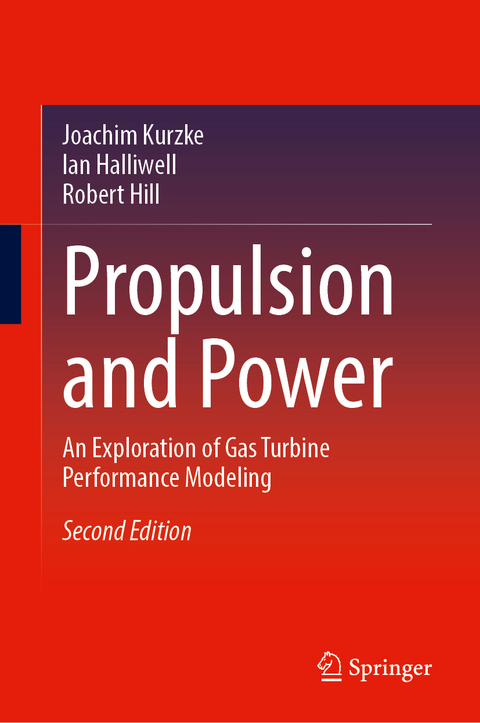
Propulsion and Power
Springer International Publishing (Verlag)
978-3-031-65025-3 (ISBN)
- Noch nicht erschienen - erscheint am 10.02.2025
- Versandkostenfrei innerhalb Deutschlands
- Auch auf Rechnung
- Verfügbarkeit in der Filiale vor Ort prüfen
- Artikel merken
This book is for students, teachers, and practicing engineers and describes an industrial approach to gas turbine engine simulation, mainly for aircraft propulsion. The principles of performance model creation are covered, and the viability and accuracy of model-based performance analyses are demonstrated by their application to real-world examples, where measured data are scarce.
Clear distinctions are made between design and off-design models, the keys to success being the recognition of the importance of scaling and validating compressor and turbine maps. This topic is discussed in more detail than in other sources. New descriptions of turbomachinery basics are offered, and it is shown how velocity diagrams can capture the quality of a compressor or turbine stage and the effects of changes. Non-dimensional performance is explained in an unusual way, without referring to higher mathematics. The influence of inlet flow distortion and heat transfer on engine operability during transient operation is also characterized.
This second edition contains new material about engine starting and windmilling, supported by how to extend existing compressor and turbine maps down to speeds as low as 1%. Unique material on map interpretation is included. The design and operation of hybrid propulsion systems are also addressed.
Not only a valuable engineering textbook but also a good read!
Joachim Kurzke spent his engineering life dealing with gas turbine performance, first at the Technical University of Munich, Institute for Flight Propulsion. He then worked for 28 years in the performance department of the company which is now MTU Aero Engines, dealing with a multitude of different engine projects. As a private enterprise he wrote the highly-acclaimed performance program GasTurb(TM).
Ian Halliwell worked for over 40 years for Rolls-Royce, Pratt & Whitney Canada, GE and three small businesses. For much of that time he enjoyed teaching gas turbine engine design from an industrial base. His teaching activities have been inspired by his long-time involvement in the AIAA International Engine Design Competition for Undergraduate Teams.
Robert Hill worked for nearly 40 years at MTU Aero Engines and Rolls-Royce Deutschland. For most of the last 20 years, he studied the conceptual cycle design of new propulsion systems for corporate and regional aircraft.
Simulation tasks: New engine design.- Engine families.- Modeling an engine.- Engine model examples.- Model-based performance analysis.- Inlet flow distortion.- Transient performance simulation.- Preliminary design:- Compressor.- Turbines.- Mechanical design.- Off-design: Component performance.- Understanding off-design behavior.- Basics: Gas properties and standard atmosphere.- Spreadsheet calculations.- Non-dimensional performance.- Reynolds number corrections.- Efficiency of a cooled turinbe.- Secondary air system.- Mathematics.- Optimization.- Monte Carlo simulations.- Appendix.
| Erscheint lt. Verlag | 10.2.2025 |
|---|---|
| Zusatzinfo | XXVI, 902 p. 740 illus., 637 illus. in color. |
| Verlagsort | Cham |
| Sprache | englisch |
| Maße | 155 x 235 mm |
| Themenwelt | Technik ► Maschinenbau |
| Schlagworte | Conceptual Gas Turbine Design • Gas Turbine Performance • Preliminary Gas Turbine Design • Thermodynamic Cycle • Transient Gas Turbine Simulation • Turbojet Design |
| ISBN-10 | 3-031-65025-5 / 3031650255 |
| ISBN-13 | 978-3-031-65025-3 / 9783031650253 |
| Zustand | Neuware |
| Informationen gemäß Produktsicherheitsverordnung (GPSR) | |
| Haben Sie eine Frage zum Produkt? |
aus dem Bereich


